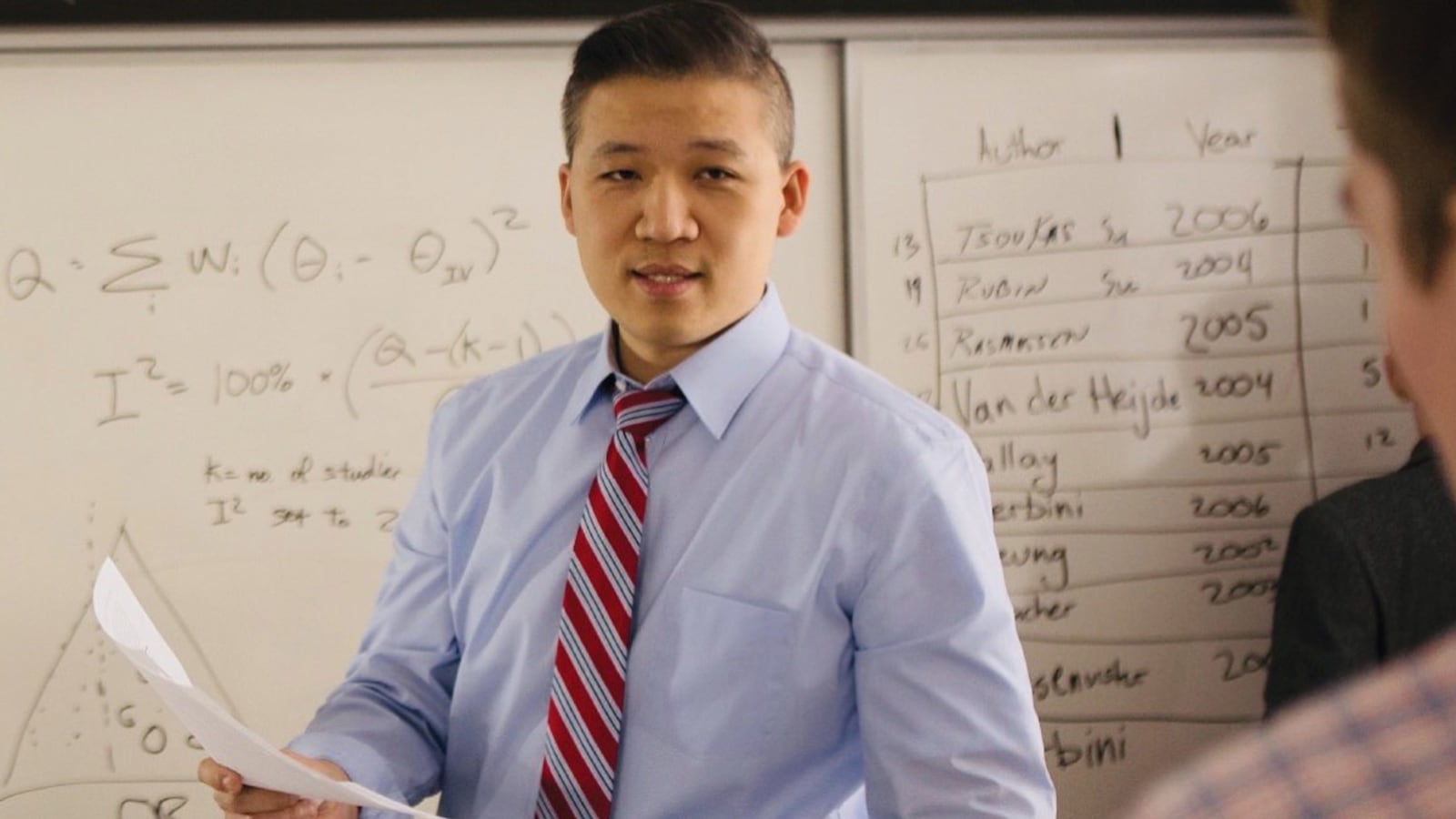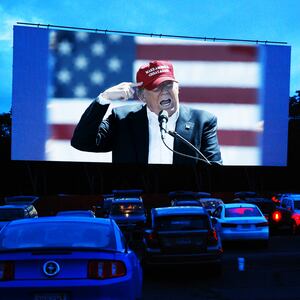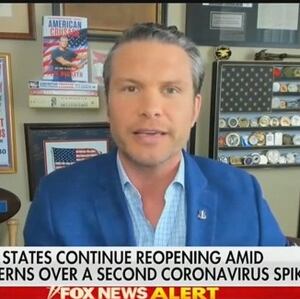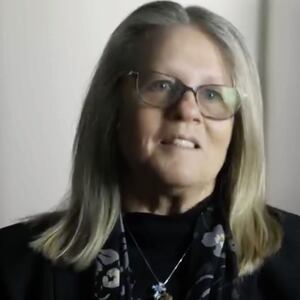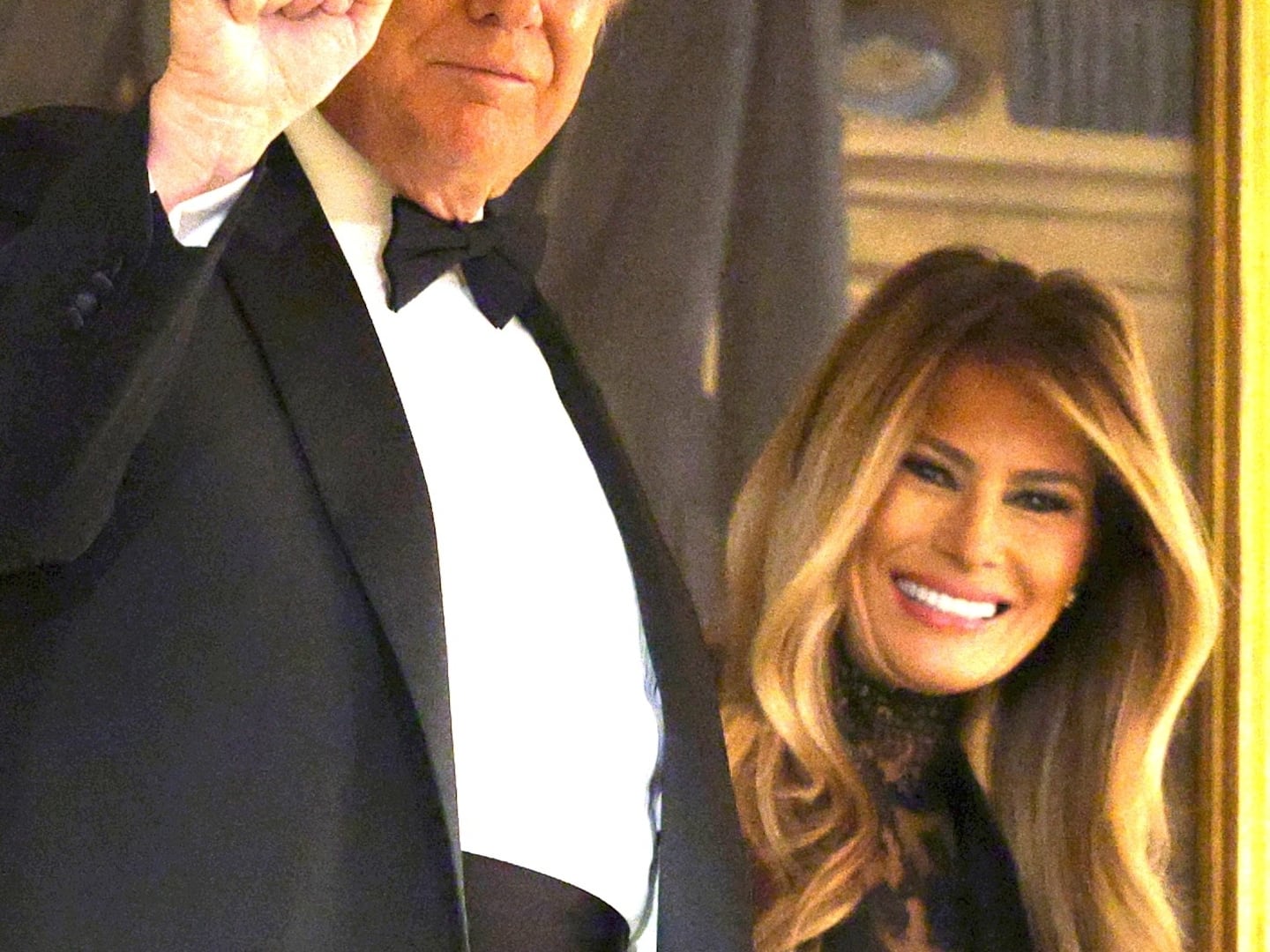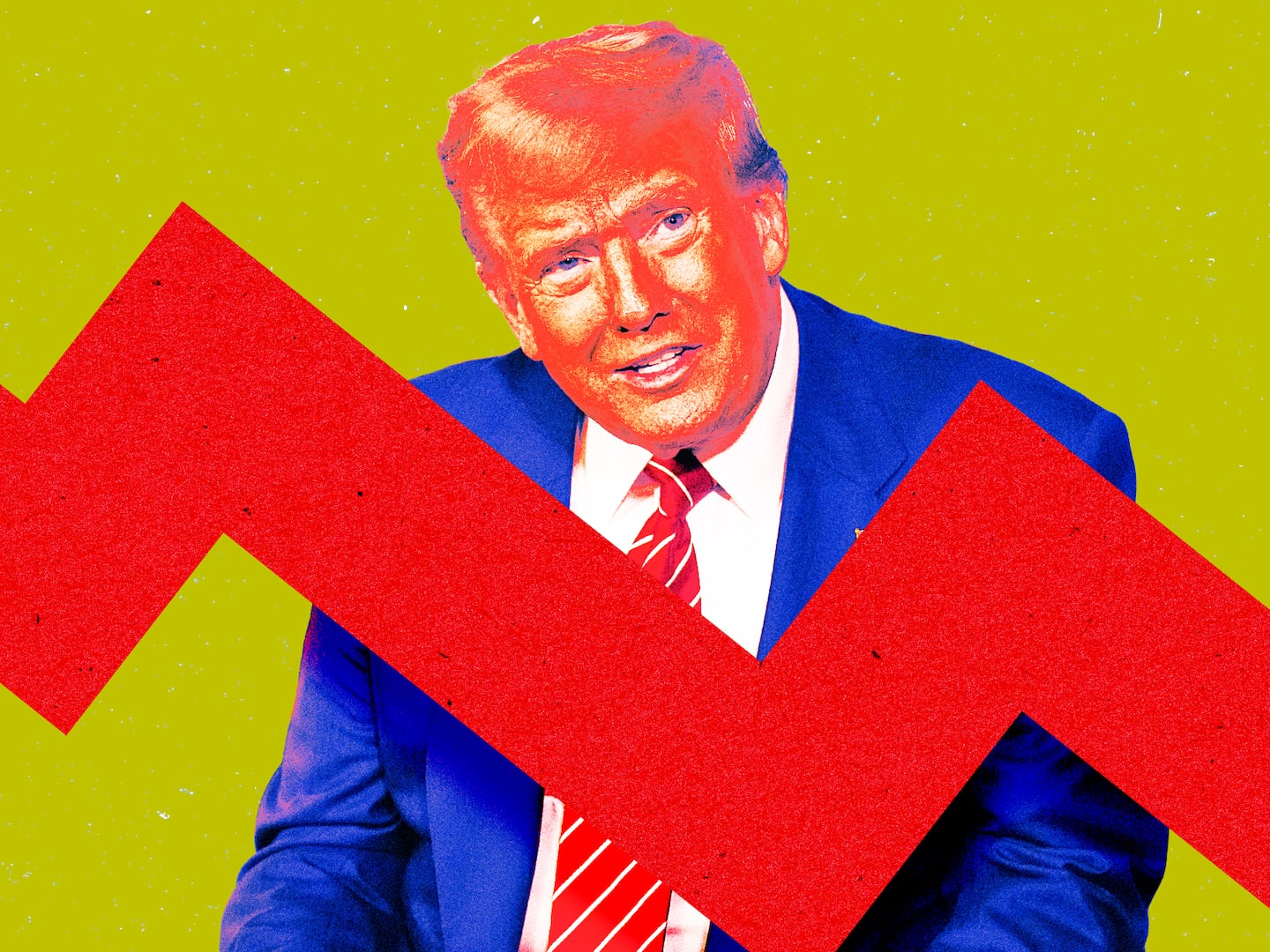“HOLY MOTHER OF GOD.”
That’s how epidemiologist Eric Feigl-Ding began a since-deleted 14-tweet thread on Jan. 25 warning about the “thermonuclear pandemic level bad” infectiousness of the coronavirus that broke out in Wuhan, China.
The first confirmed U.S. case had been announced by the Centers for Disease Control and Prevention (CDC) days earlier outside Seattle. But the disease was not widely understood to be a potentially nightmarish pandemic. Many infectious disease experts had been ignored despite warning for years that the U.S. was not prepared for a seemingly inevitable health crisis. Feigl-Ding, a visiting scientist at Harvard’s Department of Nutrition, wanted to help ensure their message was heard.
“I felt I had to really shout in all caps in a way that the lay people will understand, and I simplified a lot of the language,” he said in an interview.
Before unleashing his barrage, he had been floored by a preprint—that is, not-yet peer reviewed—paper that initially estimated the disease’s reproduction number, or R-naught (R0), at 3.8. That would mean each infected person spreads the virus to 3.8 people on average. Estimates of that figure have since veered toward closer to 2, which is a significant difference.
Feigl-Ding’s tweets went viral, but as it so often does, Twitter ended up being a double-edged sword. A fellow epidemiologist chastised him for his “fearmongering hyperbole, and borderline public health malpractice.” Feigl-Ding, who is not a virologist, was also criticized for inaccuracies. In one of his tweets, he incorrectly wrote that the coronavirus was eight times as infectious as SARS, which had an RO from 2 to 5.
In an interview, he called the mistake “truly an accidental misreading” of a published journal. Once he realized it, he said, he quickly deleted the tweet.
But Feigl-Ding has since emerged as a sort of avatar for the rise of what BuzzFeed dubbed “coronavirus influencers.” The idea is that he and others have used a public health crisis—and sensational tweets—to raise their profiles.
Yet Feigl-Ding believes the backlash for some minor mistakes risked obscuring the urgency of his warnings and the need for scientists to reassess their caution in times of a major public health crisis. And in hindsight, his warnings—however flawed—were arguably more prescient than they were overheated.
After all, disease modelers have since suggested that COVID may already have been spreading fairly widely outside China at the time of Feigl-Ding’s initial warning. And, of course, there is the sheer volume of the American toll of an historic health crisis: over 1 million confirmed COVID-19 cases, with over 70,000 deaths in the U.S. alone.
Even now, many states are still waiting for tests, masks, and other resources as they prepare for potential surges associated with reopening their economies from lockdown. No matter how the crisis plays out from here, it’s fair to say more good-faith alarmism may have done the country—and the world—some good.
“I really hate to be the epidemiologist who has to admit this, but we are potentially faced with… possibly an unchecked pandemic that the world has not seen since the 1918 Spanish Influenza,” Feigl-Ding wrote in January.
He was onto something. And while he readily cops to mistakes, he also tries to remedy them. He deleted another thread about a paper that was later retracted linking COVID-19 and HIV (he had included a caution for readers not to jump to conclusions) and may have fed conspiracy theories. Overall, he would argue, the crux of his pandemic outcry has held up fairly well.
“I was just trying to get people to turn their heads, not necessarily to listen to me,” Feigl-Ding said, defending himself. “I'm not a messiah. I do not have the perfect messaging. Clearly my delivery was not perfect, but my point was for people to pay attention. We could have avoided it, but almost no one was paying attention.”
Through Chinese chat groups with family members in Shanghai and Chinese social media, Feigl-Ding began following the outbreak in early January. He wasn’t one of the first U.S. scientists on the case, but he was disturbed by the saga of whistleblower Dr. Li WenLiang, who warned about the virus in December, and was then silenced by the Chinese government. WenLiang later died from the virus. His death had become mainstream news on Chinese TV, but Feigl-Ding believed most of the scientific community in the U.S. didn’t have “good enough numbers and data” to “quantify anything” conclusive about the virus.
According to Feigl-Ding, “no one [in the U.S.] cared about anything in China” due to the media and political focus on Trump’s impeachment and the 2020 election. In addition to U.S. complacency, he also cited the country’s growing vaccine hesitancy, which is a top ten global health threat, according to the World Health Organization. “Vaccine dismissiveness is epidemic dismissiveness. Period. If you understood these diseases, you’d get your vaccines,” said Feigl-Ding empathetically.
Feigl-Ding praised his epidemiology colleagues as “hardcore researchers,” but he argued they often “err on the side of certainty about information before sharing it.” During an epidemic, Feigl-Ding said, this otherwise laudatory scientific practice is not the most prudent course of action. He said he agreed with World Health Organization Health Emergencies Program Executive Director Mike Ryan’s comments from a March press conference, where he stressed, “If you need to be right before you move, you will never win.”
Feigl-Ding decided to move fast and post his warning. “I thought Twitter was the best open platform that levelled the discussion,” he explained. “I wanted a public discussion about this epidemic right now.”
He received attention, retweets, followers—and lots of criticism.
On Jan. 28, The Atlantic published “How To Misinform Yourself About Coronavirus.” The story by Alexis Madrigal featured Feigl-Ding’s thread and quoted science journalist Ferris Jabr, who called out the clear error in one of his tweets. The article also said Feigl-Ding’s tweets exemplified a larger Twitter problem, where “the most extreme statements can be far more amplified than more measured messages.”
Feigl-Ding admits that Twitter does nurture bad-faith actors who use sensationalism, but his personal defense for his thread is that he felt had to literally “shout out this information, otherwise nobody would have cared.” He said if he spoke as a measured scientist in scientific language, the thread would have never received the attention it needed.
“Please stop promoting Dr. Eric Feigl-Ding.”
That was the request I received from a stranger in March. The sender added, “We are in desperate need of trusted voices in covering this epidemic. He is not one.” They attached a Health Journalism article asking media outlets to better vet their sources. These continued critiques exasperate and exhaust Feigl-Ding, and he believes some are just petty and simply about “territorialism and credentialism.”
Feigl-Ding, who ran for Congress in Pennsylvania’s 10th Congressional District as a Democrat in 2018, and lost, assured me he had tremendous respect for virologists. But, he said, “you don’t need to be a virologist to understand the anecdotes of this epidemic.”
“You need to have empathy and a scientific mind to understand this is a very dangerous disease,” he argued. “It takes a deep insight into data, which can come from a range of different scientific or business disciplines, to read the tea leaves, to decipher signal from noise. The signal showed this epidemic had a seriously dangerous potential.”
But if Feigl-Ding was so passionate about his convictions and decision to tweet, then why did he delete the initial viral thread?
Feigl-Ding said he felt pressured from Harvard to do it. “I deleted the thread because I had enormous, enormous pressure from the Harvard administration and really difficult personal and professional attacks against me from some Harvard colleagues who accused me of being a scaremonger and some sort of opportunist. I am absolutely not.”
I asked him to provide names, and he declined. But as The Chronicle of Higher Education reported, Harvard epidemiologist Marc Lipsitch was publicly among them, going so far as to label Feigl-Ding a “charlatan exploiting a tenuous connection for self-promotion.” A spokesperson for Harvard declined to comment for this story.
Recently, Feigl-Ding has received some vindication. He takes immense solace in knowing his former Harvard adviser Simin Liu has publicly supported him. Liu is currently the Distinguished Chair in Global Health for the U.S. Fulbright program in China.
Governor Phil Murphy of New Jersey also tweeted last month that he had a productive call with Feigl-Ding about how to use technology to help flatten the curve and responsibly reopen his state. He gave Feigl-Ding credit for leading the team that developed one of the first mobile apps for contact tracing in 2014, though it did not get distributed.
Even Madrigal acknowledged his original Atlantic piece critiquing Feigl-Ding’s tweets might be due for re-assessment in light of the evolving pandemic. On March 26, he tweeted, “the piece made sense on Planet A, where a pandemic was not bearing down on us, but not on Planet B, where we all now live. It was right in the particulars and wrong on the big picture.”
Feigl-Ding said he has been advising officials on the comparative effectiveness of different states’ interventions for containing the epidemic. He also said he had finished co-writing a meta-analysis that explores the very strong risk factors of diabetes for increasing COVID mortality.
With President Trump and several Republican governors urging the country to reopen, I asked Feigl-Ding if he had a new warning for Americans. He emphasized what other epidemiologists have been harping on: the U.S. was not doing enough testing.
He compared our current approach to “dropping water from a plane” which “won’t put out a blazing wildfire.” He said we need more aggressive, early, massive nationwide testing, rapid contract tracing in communities, and then quarantining of those contacts to truly flatten the curve. “And we can’t play whack-a-mole, we need a very coordinated national approach to containment, since U.S. states are very porous,” he said. Absent that, he predicted the virus won’t plateau or decrease throughout the country.
At one point, he ominously asked, “If some states are not shutting down, then you can easily cross borders. What’s going to happen?”
Sure enough, the Washington Post reported this week on mobile-phone data pointing to a surge of travel from nearby states to Georgia, where restaurants and other businesses had begun to reopen before epidemiologists deemed it wise.
This time, Feigl-Ding hopes the public pays attention to the alarm bells.

